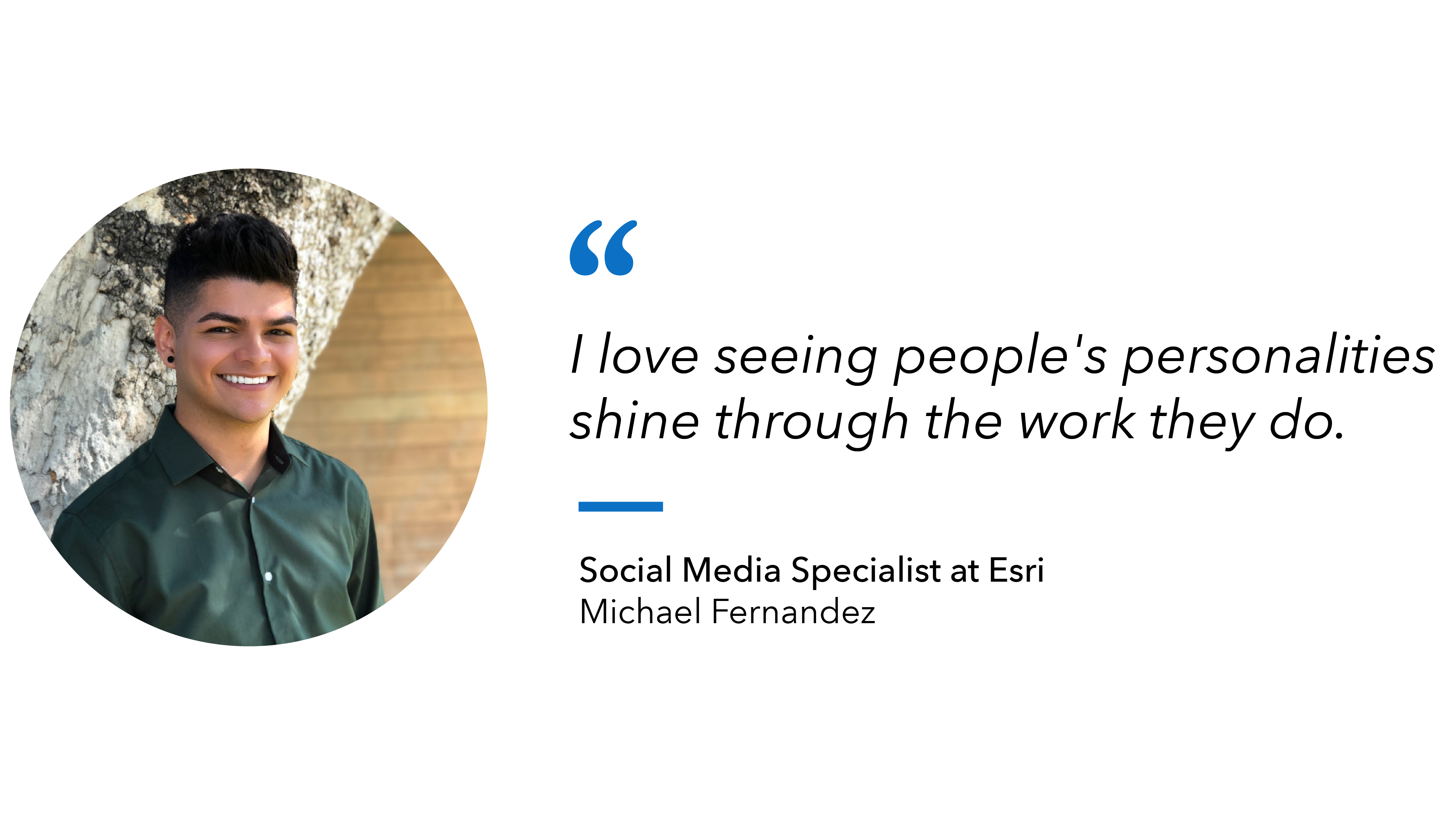
Head on over to @Esrigram, Esri’s Instagram account, made for the mappiest people on earth. Travel the ocean floor, through cityscapes, or back in time through a digital twin. Discover wildfire activity, global biodiversity trends, even PB&J hotspots near you.
And behind the dot density, humor, and hashtags, you’ll find the wizard behind the curtain — Michael Fernandez.

Michael is a Social Media Specialist at Esri and oversees content strategy for the corporate Instagram account, better known as @Esrigram. Perhaps more than anyone, Michael understands the power of the right image.
For him, it was a superhero map.
Five years ago, Michael — then a youth coordinator at the Boys and Girls Club in Redlands, California — gathered a captive group of middle schoolers for a GIS Day event. And something unexpected happened. As the hosts unveiled map after map, the teenagers and Michael were wowed by the visuals, the messages behind them, and the fun of geography. And the rest is history.
To celebrate the 25th anniversary of GIS Day, Michael shared his journey into the world of GIS, creative approaches to connecting with the Esri community, and the challenges of communicating complex spatial data in an understandable way. The following conversation between Michael and the StoryMaps team has been edited for brevity and clarity.

Q. Michael, you may have the most exciting job here at Esri. Can you tell our readers a little bit about what you do?
A. Over the past five and a half years at Esri, I’ve held two main positions: Public Relations Coordinator and now Social Media Specialist.
My initial work in public relations focused a lot on traditional media and press where I learned about GIS in different industries. Then eventually, our team started to create the foundation for an influencer program, which was innovative and something Esri had never done before. That work, building relationships and trends, offered a natural transition into a social media opportunity.
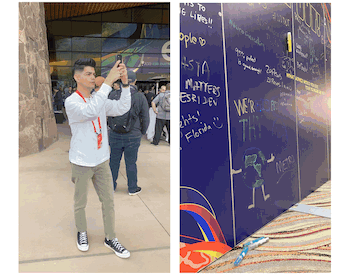
Esri experimented with TikTok for a while, and Esri turned over the strategy and videos to me. It was a really useful pilot as we engaged younger, non-GIS audiences and our traditional users through a non-traditional platform. And when the pilot ended, I had the opportunity to apply those video skills and creativity to @Esrigram.
Now, on top of planning, curating, and creating content for @Esrigram, I also help manage social content strategy for all of Esri’s internal publications (ArcNews, Esri Blog, WhereNext, etc.), and handle major announcements across Esri’s corporate social platforms.
On the social team and in influence marketing in general, I’ve been fortunate to network and build relationships with so many teams and individuals, like the StoryMaps team. 😊 That’s something that I enjoy. It’s always exciting because everyone brings a different perspective and new ideas to the table. You know, here at Esri, people are creating solutions to some of the world’s biggest problems, and I get to be a part of that.
Q. And how did you end up in such a fun and unique role?
A. I grew up in the Redlands area, and funny enough, I really knew nothing about Esri until a GIS Day event.
In 2018, two Esri employees came to the Boys and Girls Club of Redlands where I was a youth development specialist and also a member growing up. They showcased a few different maps to our middle school students, and there’s one that’s stuck with me over the years — a Marvel map that laid out the origins of each superhero.
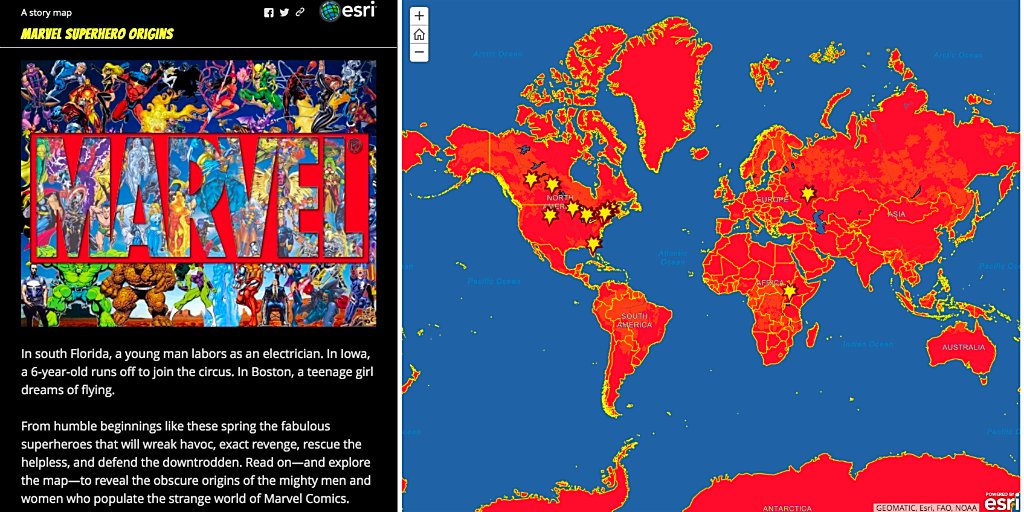
The kids loved it because it was something that they were familiar with. It was presented in a way that they could understand, be interested in, but still be intrigued.
I was intrigued as well. Again, I had no idea what Esri was. I’d never even heard the name. But after the GIS Day event, the same day, I explored Esri’s website, applied for a public relations position, and the rest is history.
Q. So you joined Esri as a public relations coordinator. Did you have any background in geography or GIS?
A. No, not all all.
I graduated from the University of Laverne with a degree in communications.
Q. Was there a learning curve when you started with Esri? What were the challenges?
A. Yes, and the learning curve is still present. I don’t let it deter me though. I never did, even when I first joined the company.
I didn’t know much about Esri or GIS, but I saw that as a challenge. It was exciting to apply my interests in marketing, communications, and social media to an industry I never thought I’d be involved in. I’ve been here for five and a half years, and there are always new things to learn. I see it as an opportunity to understand better what people are sharing, showcasing, or telling the community
At least twice a week, I come across content where I’m like, “I had no idea people could map this.” And it’s absolutely phenomenal, especially when a map or really any content, is visually appealing. That’s the type of content I want to share on social media.
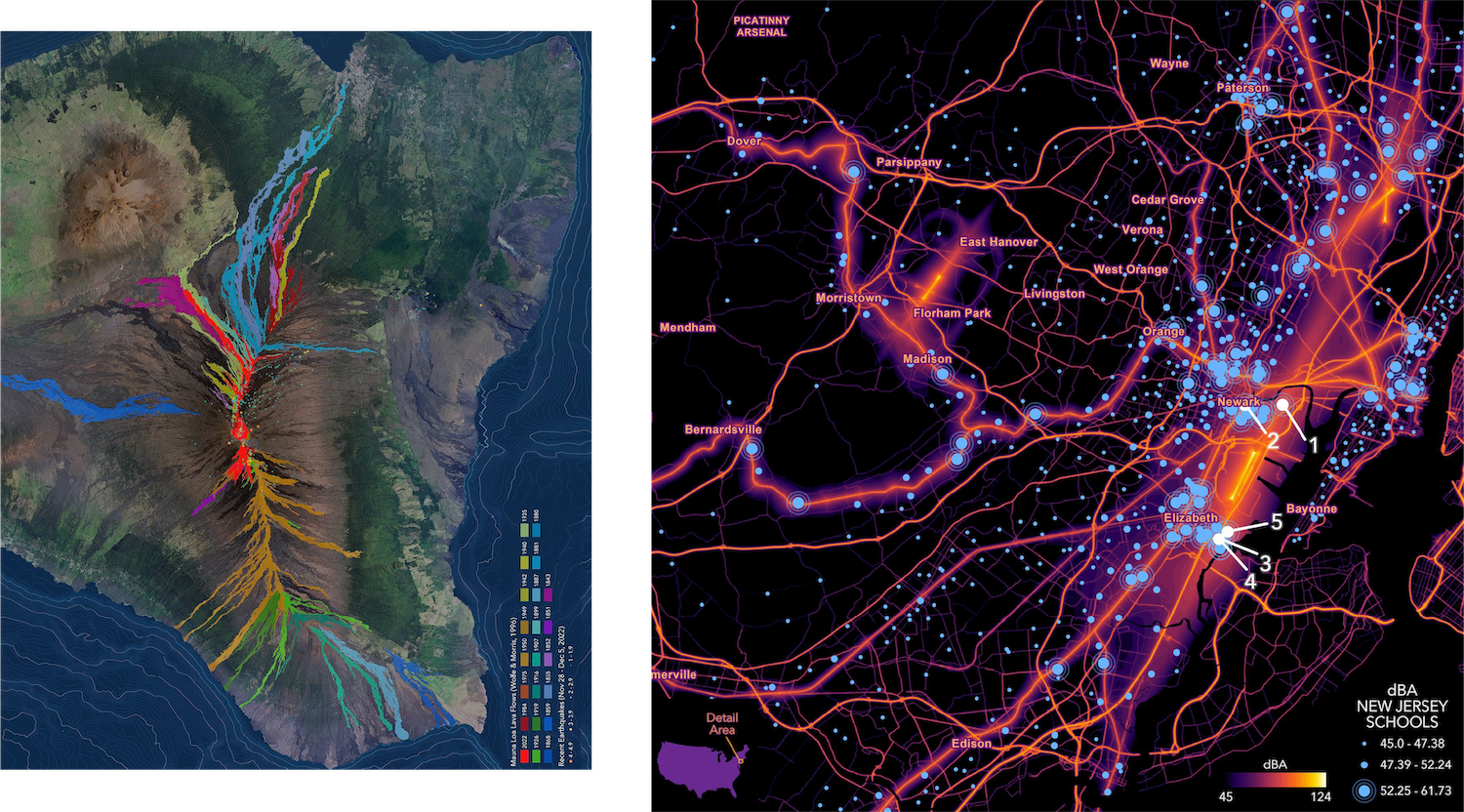
Q. How has your background influenced your work as a social specialist for a geospatial company?
A. My experience has taught me the importance of making GIS content approachable, entertaining, and easy to understand.
As someone who doesn’t have a background in cartography or geography, I focus on creating content that appeals to both GIS enthusiasts and newcomers by blending technical information with relatable and fun elements, ensuring we engage a broad audience.
And we try and add conversation and humor to post and my responses — to ensure our community knows that we’re listening and value them.
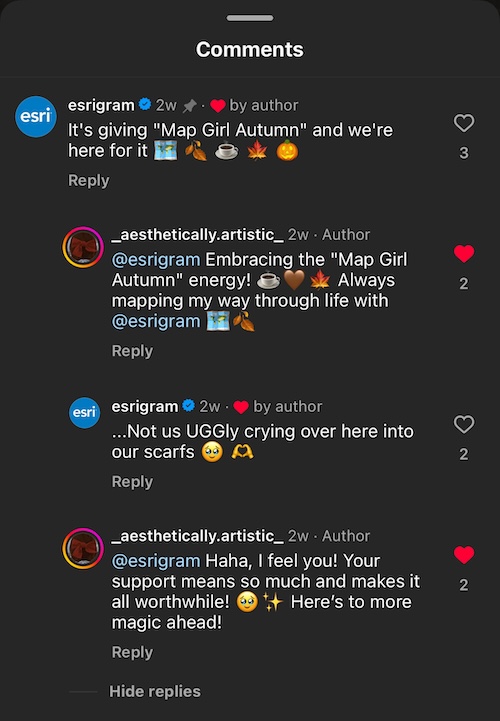
Q. How do you personally handle the balance between image or brand-heavy content versus map-heavy content, trying to reach a broad audience and team goals?
A. I, as a part of the Esri social team, look at content from two perspectives: what the content is trying to showcase and what assisting imagery comes with it.
On social media, imagery plays a large role in engagement and how content performs. And sometimes useful and interesting content may lack strong visuals for social posts. Fortunately, we have options. For platforms that are more imagery-heavy, we focus on the visual elements. For other platforms where people are looking to get technical tips, tricks, or read blogs, we rely on other media like how-to videos or animation.
Overall, we aim to create content that’s meaningful to our diverse audiences across all platforms.
Q. What signals do you see that people really love what they do here or love GIS? Do you have any good stories or examples?
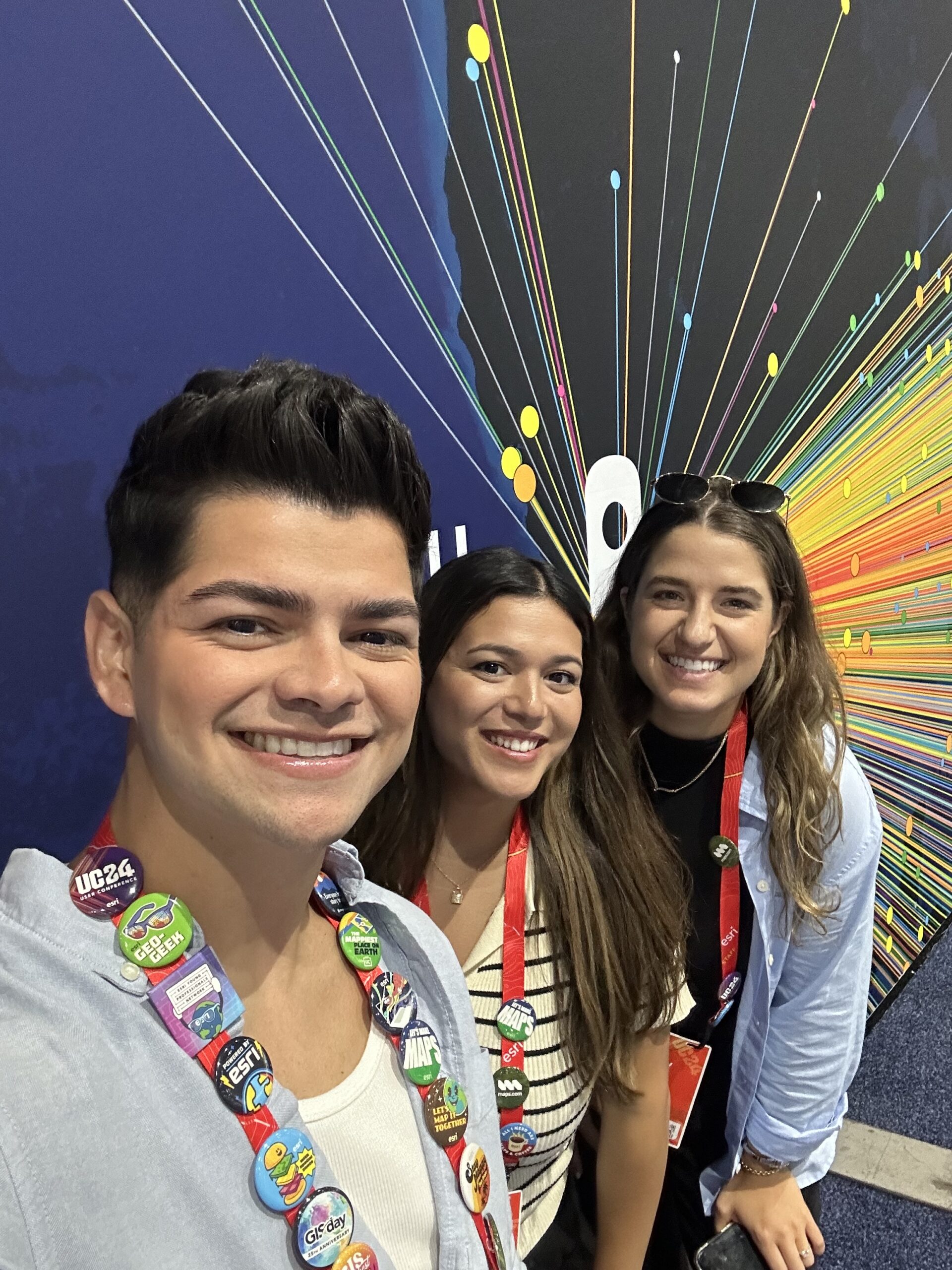
A. I love seeing people’s personalities shine through in the work they do. For example, people create and share story maps as resumes or to showcase their talents and passions in a fun way.
On social, the community shares map humor through hashtags like #mapsinthewild, and our employees participate in mappy holiday campaigns through Esri Experience. There’s just so much room for collaboration and networking throughout the Esri community as a whole. I’ll give it the word beauty.
And then Esri events like GIS Day and the annual Esri User Conference bring the passionate community together for a common purpose and for fun, which gives my team an opportunity to lean in.
For example, at the user conference last year, the team created a “social wall” made to look like the Taylor Swift Eras tour. People loved it! For the team, it was an eye-opener. We didn’t realize the number of dedicated “Swifties” in our audience. The selfies, of course, were a big hit on social media. The lyric-themed social engagement was an unexpected bonus.
Q. As a communication pro in a GIS world, what would you tell students or young professionals about Esri?
A. Great question. I’ve had many opportunities to share my experiences with university students at Esri events. I always emphasize a few things.
First, focus on the skills that you do have. Show how your qualifications can benefit Esri, whether you have a background in GIS or not. We need talented people in all fields.
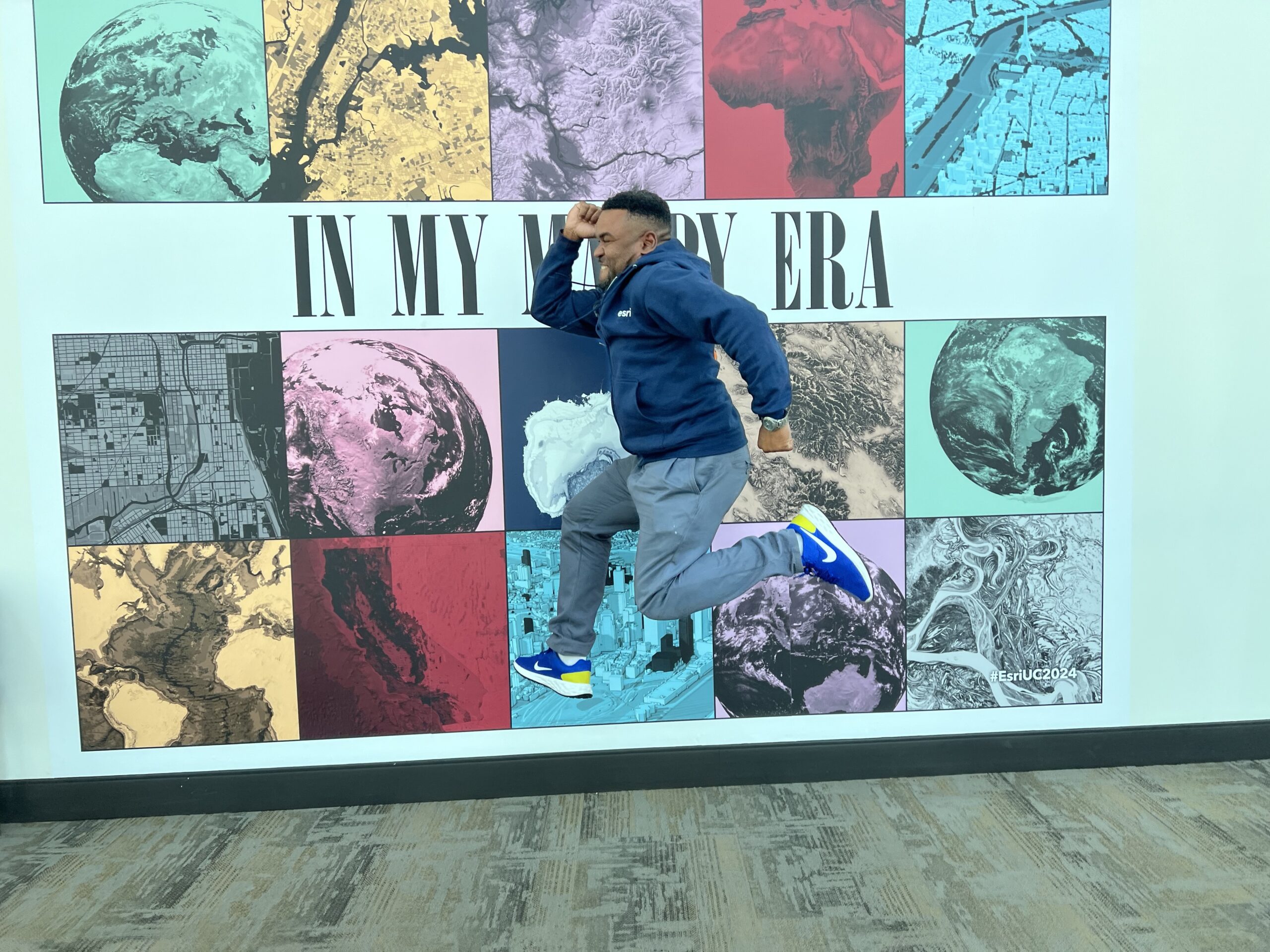
Second, be honest during your interview. I was eager and showed intent, demonstrating a real interest in what I found intriguing about Esri from a communications and marketing perspective. I showcased that, even though I didn’t have a background in cartography, geography, or GIS technology, I was eager to learn and wanted to put my skills to the test within the organization.
Finally, whether a cartographer, developer, or graphic designer, Esri embraces creativity — and employees love their jobs and the positive difference that their work can make in the world.
Q. Let’s flip the questions, now. What advice would you give to someone hosting a GIS Day event, someone who wants to reach a younger audience?
A. Here’s my best advice: pay close attention to the audience you’re trying to serve and communicate with. Shape your content to their interests.
The beauty of GIS is that there are so many options to take a specific topic and turn it into something creative and informative to share. Whether it’s for a book club, a pet group, or any other audience, there are countless ways to tailor the information you’re sharing for GIS Day.
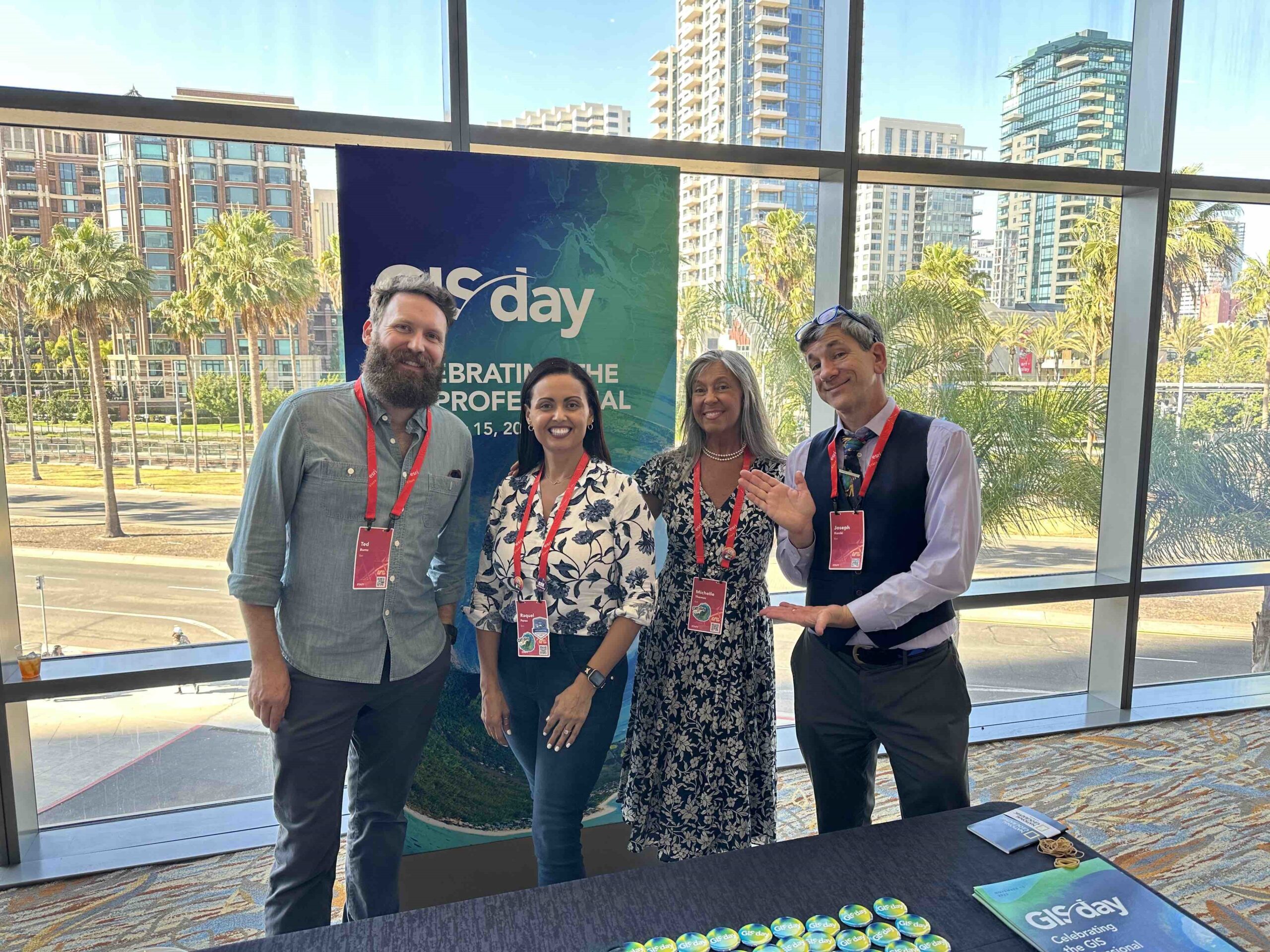
You can check out the GIS Day website and Esri community for ideas. And of course, follow and tag @GISDay on X and Facebook.
Looking back at GIS Day 2018, what did those two employees from Esri “do right”?
Aside from the superhero map and others, I still remember that the speakers were extremely approachable. They took the time to answer questions and ask questions too, have the students think and explore. Even though some topics may have been heavy for middle schoolers, the open conversation kept the students interested.
And as someone who wasn’t the intended audience, I felt served just as much as those middle schoolers did.
As you host your GIS Day event or share your passion in other ways, remember that it makes a difference — sometimes in unexpected ways. That’s how I ended up here.

This featured storyteller interview was prepared as a part of the November 2024 | Celebrating 25 Years of GIS Day issue of StoryScape℠.
For more interviews and articles like this one, be sure to check out StoryScape℠, a monthly digital magazine for ArcGIS StoryMaps that explores the world of place-based storytelling — with a new theme every issue.

Article Discussion: